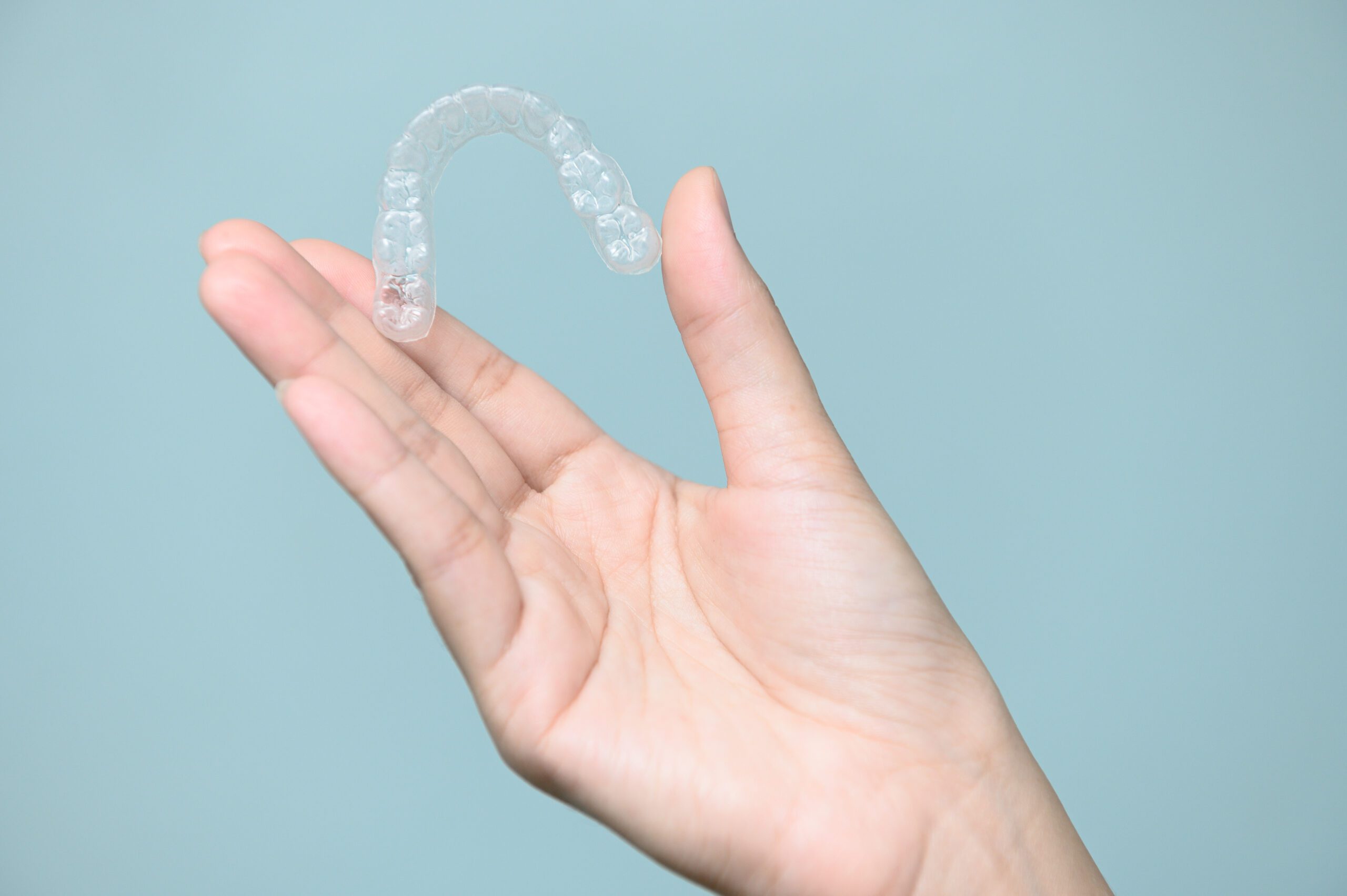It’s hard to imagine but did you know that Invisalign® has been straightening smiles for 25 years? To date, around 14 million people around the world have trusted Invisalign to transform their misaligned teeth from crooked to fabulous.
Unlike traditional braces with brackets and wires, Invisalign uses a series of clear, custom-made aligners that fit over teeth to gradually shift them into their ideal positions. Not only are these aligners practically invisible, but they’re also removable, making them a popular choice for orthodontic patients who don’t want a big change to their daily eating and oral hygiene habits.
So if you’re considering clear aligners and wondering, “What exactly can Invisalign fix?” your Invisalign orthodontist serving Cherry Hill, NJ, Voorhees, and Haddonfield has the answers.
Orthodontic Issues Invisalign Can Fix
Invisalign is designed to treat a range of common orthodontic issues though initially, orthodontists offered it for only mild to moderate cases. But today, in the hands of an experienced orthodontist like Platinum Invisalign Provider, Dr. Cara Piskai, Invisalign is used to correct even some complex cases. Here’s a list of dental problems that Invisalign can fix:
Crowded Teeth
If your teeth are too tight together, they can overlap, become twisted, tilt, or stick out. How does crowding happen? It’s typically caused by a small jaw that doesn’t provide enough space for teeth to align properly. Other times, crowding can happen if baby teeth fall out too soon: the surrounding teeth naturally shift closer together to close the gaps, resulting in inadequate space for the adult tooth to erupt properly. Crowded teeth can contribute to a higher likelihood of tooth decay and gum disease since tight spaces are harder to brush and floss really well.
Getting Invisalign for crowded teeth creates room in the jaw, allowing teeth to align well. Dr. Piskai pairs Invisalign with tooth-colored attachments to treat all types of cases.
Gaps Between Teeth
Do your teeth have small gaps between them? Gaps between teeth can become an oral health issue, creating pockets between your teeth where food can get stuck. Gaps also can contribute to tender or sore gums and increase your chances of gum disease.
Gaps are typically the result of things like:
- Missing teeth
- Genetics
- Teeth that are too narrow for your jaw size
- Prolonged baby habits like thumbsucking
So how can Invisalign fix gaps? Invisalign closes small to moderate spaces between your teeth, enhancing both aesthetics and functionality. Say goodbye to getting food trapped between your teeth so often!
Overbites
When your upper teeth overlap significantly over your lower teeth, it’s called an overbite. Having a significant overbite can make chewing or pronouncing certain sounds difficult, or lead to jaw pain and uneven wear on your teeth. It can also leave your top front teeth susceptible to injury, especially if you have overjet teeth as well (when your top front teeth stick out like “buck teeth”).
So can Invisalign fix an overbite? For sure! Depending on the specifics and severity of your overbite, Dr. Piskai will design Invisalign treatment for an overbite that shifts protruding teeth back into an aligned position, incorporate Invisalign attachments and rubber bands to move your jaw into proper alignment, or a combination of both. The goal of correcting an overbite is not only improved aesthetics but a stable, healthy and functional bite.
Underbites
When your mouth is closed, do your lower front teeth protrude beyond your upper front teeth? If so, this is called an underbite. In many cases, an underbite is an issue with your lower jaw sitting too far forward or being too large for your upper jaw. An underbite can make it hard to chew efficiently or speak clearly and can also cause uneven wear on your tooth enamel.
Invisalign can fix an underbite by guiding your teeth into their proper positions, bringing balance to your smile. For severe underbites, we might suggest multidisciplinary treatment: pairing Invisalign treatment with oral surgery or even with braces to achieve the well-stacked jaws you need for a strong and functional bite.
Crossbites
Unlike crowding or spacing, overbites or underbites, a crossbite can be a bit tricky for a patient to identify in the mirror. But simply put, a crossbite is when only some of your upper teeth sit outside your lower teeth, either in the front or back of your mouth.
For some, crossbites happen because they run in your family or your baby habits like thumbsucking or tongue thrust went on for too long. For others, early loss of baby teeth — whether from trauma or falling out early — can also contribute to a crossbite.
A crossbite can cause your teeth to chip or wear down too quickly. It can also cause gum recession or result in little notches above your gum line. In severe cases, this kind of damage can lead to painful gum issues or even bone loss. We’ve seen some of our patients compensate for their crossbite by shifting their jaw to one side, resulting in an asymmetrical face structure.
How can Invisalign fix a crossbite? At Piskai Orthodontics, we’ve used Invisalign to correct single-tooth crossbites with great success. Crossbites involving many teeth on one side may also be correctable with Invisalign, though the recommended treatment is based on what can best align or expand your jaws correctly.
Open Bites
If there’s a gap between your upper and lower teeth when your mouth is closed, it’s known as an open bite. What causes an open bite? Habits like tongue thrust, prolonged thumbsucking, or pacifier use are the most common, while poor jaw growth can also contribute to an open bite.
In recent years, the rise of DIY, online clear aligner treatment has contributed to open bite cases, too, since most of these brands don’t adequately address jaw alignment in concert with correcting crooked teeth. Having an open bite can make it hard to chew or bite into foods easily and often leads to uneven wear and tear on your teeth.
Invisalign can definitely close an open bite space. In fact, for some open bite cases, it’s preferable over braces since clear aligner treatment can target the movement of specific teeth at different times in a process called “staging.”
What Can Invisalign Not Fix?
As we’ve covered above, Invisalign can treat teeth issues like crowding, gaps, or overjet, not to mention jaw misalignments like some underbites, crossbites, and open bites. But it does have some limitations, even in the hands of an expert Invisalign doctor. When patients ask us, “What can Invisalign not fix?” we usually talk about the following:
Tooth Shape
Some patients have teeth that aren’t an ideal shape or proportion for fitting inside a clear aligner. Yes, even though Invisalign is completely custom, short, round, or pegged teeth, or teeth with severe tips may not allow a clear aligner sufficient grip. As a result, aligners aren’t as effective at moving teeth as an appliance like braces.
Tooth Position
As we mentioned earlier when talking about crowded teeth, sometimes a tooth is twisted or rotated. Molars rotated more than 20 degrees are difficult to correct with Invisalign, as are some canines, premolars or incisors that have too much rotation.
And tilted teeth? If the tilt is over 45 degrees, Invisalign will struggle to pull the tooth up into the correct vertical positioning.
Large Gaps Between Teeth
Invisalign is able to close small gaps between teeth, but if there are larger gaps they may be difficult to close with Invisalign.
Midline Movements
Some patients have front teeth that are offset from the middle of their face, otherwise called the midline. Invisalign can correct a midline discrepancy, but the use of elastics is necessary in combination with Invisalign aligners for midline correction.
New Dental Work
If you had restorative or cosmetic dentistry like a crown or porcelain veneers after your Invisalign clear aligners have been made, your aligners may not fit properly or be effective in shifting teeth into place. Dental restorations must wait until after your Invisalign treatment is done or a new scan must be taken to fabricate new aligners. Restorative or cosmetic work on even one tooth can cause aligners to not fit and make them ineffective.
Find Out If Invisalign With Your Cherry Hill, NJ Provider Will Transform Your Smile
The first step in knowing what Invisalign can or can’t fix for you is coming in for a consultation with your Cherry Hill, Voorhees and Haddonfield orthodontist. Dr. Piskai is a board-certified South Jersey Invisalign provider who offers custom braces and Invisalign with a modern, fun, and personal approach that patients love.
Contact us to start your smile journey. At Piskai Orthodontics, we’re all about helping patients get the custom smile they’ve always wanted.




